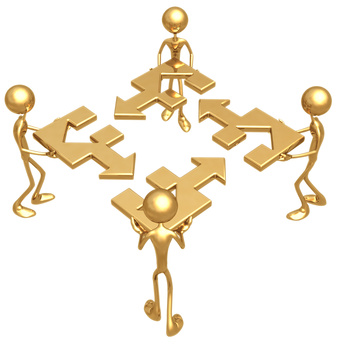A planned change is a change planned by the organisation, it does not happen by itself. It is affected by the organisation with the purpose of achieving something that might otherwise by unattainable or attainable with great difficulty. Through planned change, an organisation can achieve its goals rapidly. The basic reasons for planned change are:
- To improve the means for satisfying economic needs of members.
- To increase profitability.
- To promote human work for human beings.
- To contribute to individual satisfaction and social well being.
Levels of Planned Organizational Change
Planned organizational change is normally targeted at improving effectiveness at one or more of four different levels : human resources, functional resources, technological capabilities, and organizational capabilities.
1. Human Resources
Human resources are an organization’s most important asset. Ultimately, an organization’s distinctive competencies lie in the skills and abilities of its employees. Because these skills and abilities give an organization a competitive advantage, organizations must continually monitor their structures to find the most effective way of motivating and organizing human resources to acquire and use their skills. Typical kinds of change efforts directed at human resources include : (i) new investment in training and development activities so that employees acquire new skills and abilities; (ii) socializing employees into the organizational culture so that they learn the new routines on which organizational performance depends; (iii) changing organizational norms and values to motivate a multi-cultural and diverse work force; (iv) ongoing examination of the way in which promotion and reward systems operate in a diverse work force; and (v) changing the composition of the top-management team to improve organizational learning and decision making.
2. Functional Resources
Each organizational function needs to develop procedures that allow it to manage the particular environment it faces. As the environment changes, organizations often transfer resources to the functions where the most value can be created. Critical functions grow in importance, while those whose usefulness is declining shrink. An organization can improve the value that its functions create by changing its structure, culture, and technology. The change from a functional to a product team structure, for example, may speed the new product development process. Alterations in functional structure can help provide a setting in which people are motivated to perform. The change from traditional mass production to a manufacturing operation based on self-managed work teams often allows companies to increase product quality and productivity if employees can share in the gains from the new work system.
3. Technological Capabilities
Technological capabilities give an organization an enormous capacity to change itself in order to exploit market opportunities. The ability to develop a constant stream of new products or to modify existing products so that they continue to attract customers is one of an organization’s core competencies. Similarly, the ability to improve the way goods and services are produced in order to increase their quality and reliability is a crucial organizational capability. At the organizational level, an organization has to provide the context that allows it to translate its technological competencies into value for its stakeholders. This task often involves the redesign of organizational activities. IBM, for example, has recently moved to change its organizational structure to better capitalize on its strengths in providing IT consulting. Previously, it was unable to translate its technical capabilities into commercial opportunities because its structure was not focused on consulting, but on making and selling computer hardware and software rather than providing advice.
4. Organizational Capabilities
Through the design of organizational structure and culture an organization can harness its human and functional resources to take advantage of technological opportunities. Organizational change often involves changing the relationship between people and functions to increase their ability to create value. Changes in structure and culture take place at all levels of the organization and include changing the routines an individual uses to greet customers, changing work group relationships, improving integration between divisions, and changing corporate culture by changing the top management team.
These four levels at which organizational change can take place are obviously interdependent, it is often impossible to change one without changing another. Suppose an organization invests resources and recruits a team of scientists who are experts in a new technology — for example, biotechnology. If successful, this human resource change will lead to the emergence of a new functional resource and a new technological capability. Top management will be forced to reevaluate its organizational structure and the way it integrates and coordinates its other functions, to ensure that they support its new functional resources. Effectively utilizing the new resources may require a move to a product team structure. It may even require downsizing and the elimination of functions that are no longer central to the organization’s mission.
